by John McAndrew, Efficient Pumping
When large quantities of water are required for a pumping station or process, it is invariably drawn from the ocean, a lake, a river or a stream, and there is always the question of filtration – how do we deal with the debris drawn into the pumping station? The answer is two-fold: there should be primary filtration, which should remove the larger and more intrusive debris, and then a secondary system which filters the flow sufficiently to allow free passage through the plant. Some plant items require further, finer filtration.
Both power station and raw water intakes for pumping stations or hydro-electric plants have to deal with debris floating in the flow. Recent television footage of inland floods indicates the type of overwhelming debris that can be carried along by inland floodwaters.
Primary screening by trash racks
A typical seaboard power station may draw in over 100 m3/s of seawater for cooling water. Any floating debris in the intake will eventually be drawn into the power station inlet canal. The intake primary protection would be a trash rack, typically a screen with bars of 100mm by 10mm arranged at a 100mm spacing. Such a trash rack would very often be vertical, and sometimes they are installed in tandem, one behind the other, to ensure that any accumulations falling during the removal or cleaning process are caught by the second screen.
Trash racks used with raking machines are usually sloped, with dimensions suited to the rake. Some rakes are fitted with guides either side of the rack to guide the rake carefully to enable complete cleaning, although others may not use guides.
The trash racks, or primary screening, would remove logs, clumps of weed, sea grasses, driftwood, large fish, tree branches, seasonal weeds such as cabbage type weeds and filamentous algae (stringy weed), jellyfish and similar.
Some trash racks may be cleaned manually by divers, and others by mechanical rakes hired in for the occasion. Others may have a purpose-built raking machine. Trash racks need to be cleaned regularly to remove pressure losses caused by the build-up of debris. The frequency of cleaning depends entirely upon what is collected, which may change from day to day or seasonally.
For both seaboard and river intakes it is important that the downstream pumps and valves are able to withstand the entry of some debris which can fall from the trash rack, without suffering undue damage. Large axial flow pumps, especially those with open or semi-open impellers, may be able to pass large items of debris such as hard hats, large fish or floating tree branches. Most pumps cannot pass large debris, although pumps can be designed using single channel impellers to pass items up to 100mm, or may be fitted with vortex impellers which can pass large items, but at the expense of pump efficiency.
Fish and marine life
An important aspect of intakes is that the approach velocity has been found in practice to be approximately 0.3m/s through the trash racks. This enables a swimmer or rower to move away from the intake.
The velocity of 0.3m/s also applies to the protection of fish. It has been found that fish are still able to swim away from intakes so long as the velocity does not exceed a nominal amount, and 0.3m/s has been taken as a good guide found from practice. With higher velocities, excessive fish kills can be found in the downstream plant.
Fish protection is today a major part of pumping station design. It would be wrong, in the writer’s opinion, to call fish or jellyfish debris or industrial waste, although such terms are common. The marine life is simply in its natural habitat. Some authorities require that anything taken from the water is deemed to be industrial waste, which needs to be disposed of. This emphasises the need to allow marine life to pass through the plant as innocuously as possible. There is a growing trend to provide fish ladders, to enable fish to swim around hydraulic structures, without having to negotiate their way around pumping plant and filters.
Overwhelming of trash racks and filters
Although seawater systems are not so affected by floods and flood-borne debris, they have different problems such as blockage by migrating shoals of fish and jellyfish.
In Europe shoals of migrating sprats have been known to close down the cooling water systems of nuclear power stations. These shoals can be up to 10km long. Such occurrences are not uncommon, but are usually associated with strong tidal currents, spring tides and gale-force onshore winds, i.e. unusually strong weather conditions.
In Australia, one power station was almost closed by shoals of jellyfish, again associated with strong inshore-bound wind conditions. In New South Wales, some intakes have been inundated by small creatures called bryozoans. These creatures, also known as ‘moss animals’ are in themselves small (less than 1mm), but can adhere together to form complete blockages of filter meshes, or entire pipelines.
The best way around such problems is to be forewarned, so that protective measures can be put in place.
Another example is seasonal weed. In some places weed growing throughout the winter period can release itself in the spring, and inundate trash racks. Once the problem is realised, preventative methods can be put in place, such as the use of divers to clean the system, or the use of temporary nets to contain the weed. The alternative may be a plant outage, with all the associated costs.
Where drum screens have become blocked by stringy weed, or bryozoans and similar marine life, it has been found that a change from thin perforated plate to a thicker plastic mesh of 15mm thickness, can prevent the marine life from getting a foothold. This may, however, cause a higher headloss across the screen.
Secondary filtration
After the trash racks comes what could be called secondary screening. These screens would likely be made from wire mesh or perforated plates, and would take out all debris greater than approximately 10mm. One can see the need to remove the debris in stages. A filter with 10mm holes would be completely overwhelmed by tree branches or clumps of weed, and would soon cease to function properly.
The amount and degree of filtration required by any process will depend entirely upon the need in the downstream plant. For example, if cooling flow has to pass through a heat exchanger with 25mm diameter tubes, then the flow needs to be filtered down to 25mm as a minimum, but in reality it requires to be filtered down to approximately 10mm as all debris is not round or in convenient shapes to suit the filter.
In the category of secondary screens are drum screens, travelling screens and pressure filters. Drum screens have been used on the seaboard intake on most seawater cooled power stations built on the east coast of Australia in the past 30 years. These designs have been aided by the small tidal variations on the eastern coast, as drum screens must still be able to operate at the lowest tide level, and this can lead to very large diameter, and more expensive, drum screens if the tidal variation is large.
Drum screens are very slow moving rotating screens, although they usually have two speeds. The double entry type allows the water to maintain its symmetrical direction to provide good inlet conditions for the pump.
Travelling screens are similar to drum screens in that they need to cater for the lowest tidal levels. They are usually large structures, but more compact than drum screens. Today’s versions of these screens are made of better materials and are considerably more reliable than those of 20 years ago. Many travelling screens installed in Australia are of the vertical flow-through (or straight-through) type, and have the potential for debris carry-over to the clean side, which then can enter the pumps.
A better design of travelling screen is to use the dual-flow or central-flow type, and with these arrangements the debris is not carried over.
In both drum and travelling screens, the water to be pumped passes through the screen, but the debris is caught in the buckets, and is then removed by the spray systems. The spray system will have its own filter and pump, and these should be regularly checked for correct functioning. It is important to have clear nozzles and fully functional sprays to avoid debris carry-over if the screens are of the flow-through type.
The installation of both drum and travelling screens are not always favourable to the inlet flow conditions to the pumps, and an allowance of additional space along with flow straightening vanes may be required to provide suitable inlet conditions for the pumps.
Fish protection
The care and protection of fish and other marine life is paramount. For example, on screens, plastic lining is sometimes placed on steel structures to avoid tearing the fish, and sluices are specially designed to accommodate fish, avoiding sharp changes in direction.
Slow moving drum and travelling screens with low water velocities give fish the chance to swim away intact, and additional features such as rounded corners on concrete edges help the fish to negotiate plant items and bends, and swim through the plant to the outlet.
Pressure filters
The alternative to using drum or travelling screens is to use pressure filters on the downstream side of the pumps, although this leaves the pumps relatively unprotected. Pressure filters can be designed suitable for seawater applications, and can be positioned independently of the tidal level. Pressure filters will incur a higher pressure loss which will increase the required pumping power. Drum screens and travelling screens, however, have low pressure losses but considerably higher associated civil costs, and when choosing which plant type to use, the civil, power usage and capital costs need to be evaluated. Pressure filters have higher velocities both on the filter face and in the backwash line, and may cause higher fish mortality.
However, such filters are very successful when installed immediately prior to condensers or heat exchangers, where they will remove mature mussels, which may otherwise block the heat exchanger or cause impingement attack to the tubes. There are a number of successful installations in NSW.
Mussels
Mussels can and do cause problems in any seawater systems. Hundreds of thousands of microscopic mussel larvae enter into seawater intakes every day. They will then settle on any surface where they can gain a foothold, and will begin to grow. They may then adhere to the walls of pipework, valves and in particular the condenser waterbox, and then grow to full size. There is evidence that mussels do not attach themselves so readily where the surfaces are smooth, or the velocity is greater than 2.5m/s.
Where they do attach, the layers will build up, and in slow moving inlet conduits may grow to be 200mm thick.
During an outage, due to the lack of flow and nutrients, many of these mussels will die and fall into the conduit. Upon re-commissioning, they will be swept into the heat exchangers or other processes, and can completely block the inlet tube plate.
Pressure filters installed immediately before such heat exchangers or condensers will remove these mussels. This type of filter has been used in these situations at NSW seawater cooled power stations with great success, and by avoiding outages are very cost-effective.
Other methods of controlling mussel growth are by subjecting them to higher temperatures (thermal shock) or by chlorination. Experience in NSW and overseas with chlorination is that intermittent chlorination, even at a level which bleaches the mussel shell, will not remove them, although may stunt their growth. However, continuous chlorination at lower levels is usually more successful. Thermal shock has been used at several NSW power stations with considerable success, and the conduits remain very clean.
Position of filters
The position of the filters or screens is all-important, and an example is as follows: a prominent building in Sydney used seawater for cooling the air conditioning, and the seawater was filtered down to 2mm in a filter. The system had in place a plate heat exchanger with 5mm clearances. On the face of it, the design was right. However, after the filter, and before the heat exchanger, was a header, which provided a good environment for mussels to grow. The heat exchanger kept blocking and required outages for cleaning. The problem was not with the filter, but with the mussels growing in the header. These mussels would decay during the outage and fall to the bottom of the header, and then inundate the heat exchanger during start-up. In this instance, a bypass line would have been useful to allow the debris to be flushed through the system and bypass the heat exchanger.
A word of caution is needed here, as it is also not environmentally acceptable to flush into an outlet any decaying or decomposing matter. The example however, indicates that to remove mussels, the filter should be as close as possible to the plant it is protecting.
Suction screens
Suction screens are another way to filter water entering a pumping station. These screens can be placed at the pump suction and filter the flow using perforated plate or perforated plastic sheets, and would remove the need for trash racks. When the differential pressure becomes too high, the screens can be backwashed by a high pressure air discharge. The design assumes that there is some flow along the river or seashore, to allow the debris to flow away from the screens. In addition, such screens would require some safety features in place to avoid an air discharge which affects the use of the river by others, or by causing undue noise.
Conclusion
Filtration of pumping stations is usually required at three levels: primary, secondary and in some cases tertiary devices. Filtration of seaboard and river intakes has significant technical difficulties, and also requires the primary consideration of marine life, and how the facility will affect that life. The question that should be asked is “Is the plant designed to keep debris away from the pump intakes, rather than to protect fish and marine life?”
Hopefully, both should be achieved.
John McAndrew is the owner of Efficient Pumping, a consultancy which provides design of cooling water systems, pumping systems and process plant for power stations, pumping stations and associated works such as pipework, filters and auxiliary systems. John has over 30 years experience in the design and contract management of hydraulic works such as pumps, valves, pipelines and pumping stations, and almost all of his career has been spent designing, contract managing, and consulting in this area.


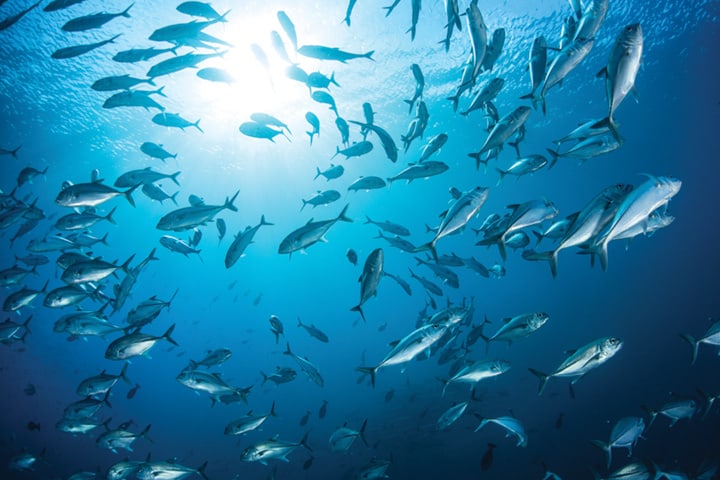
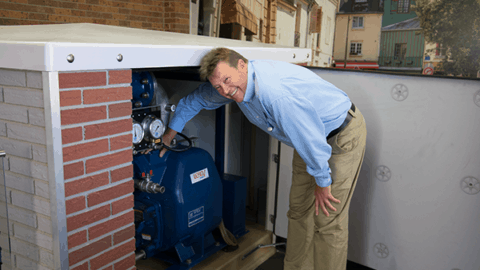

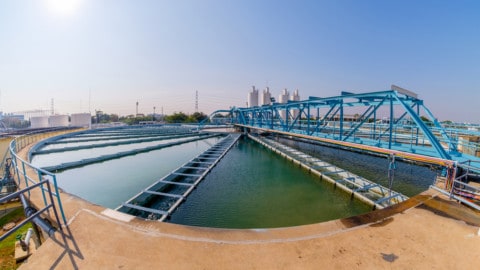
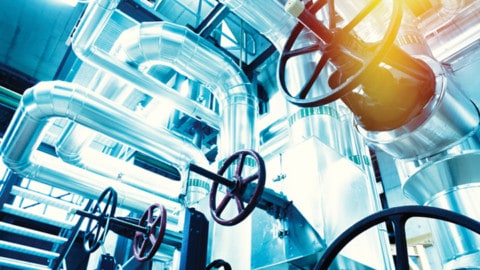
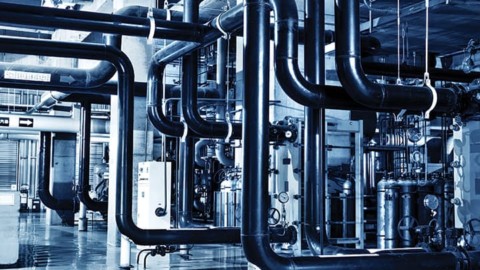

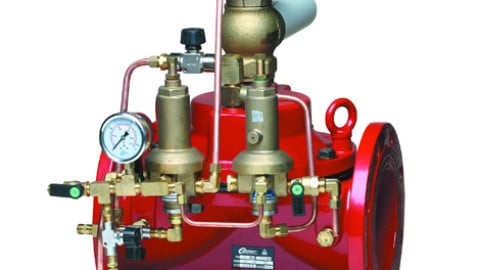







Comments are closed.